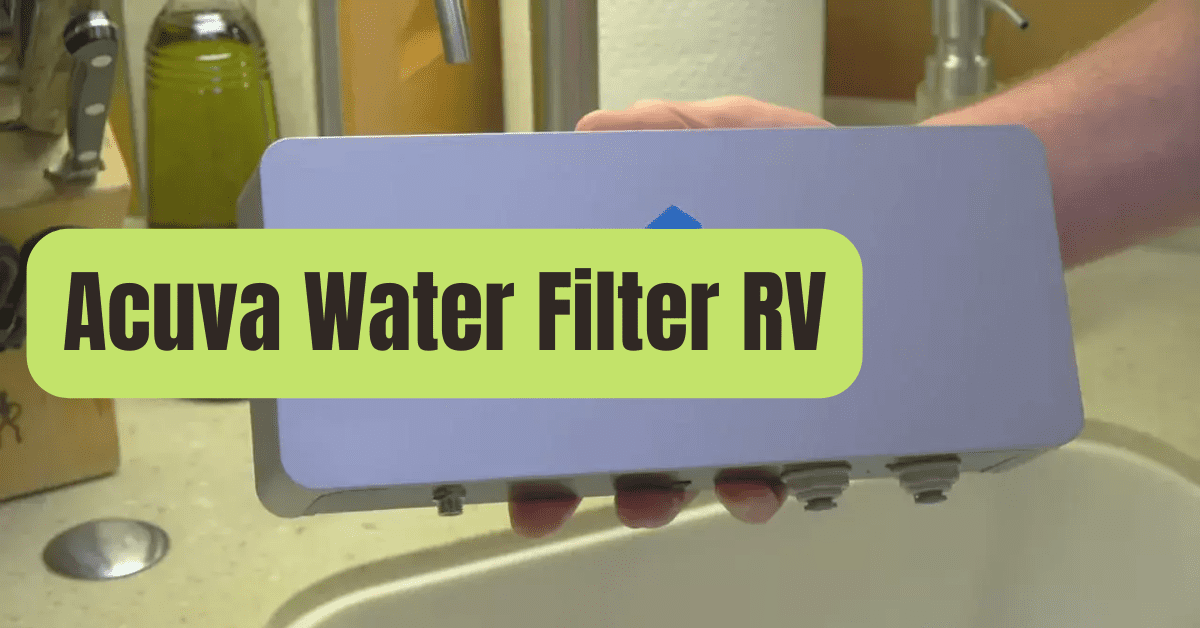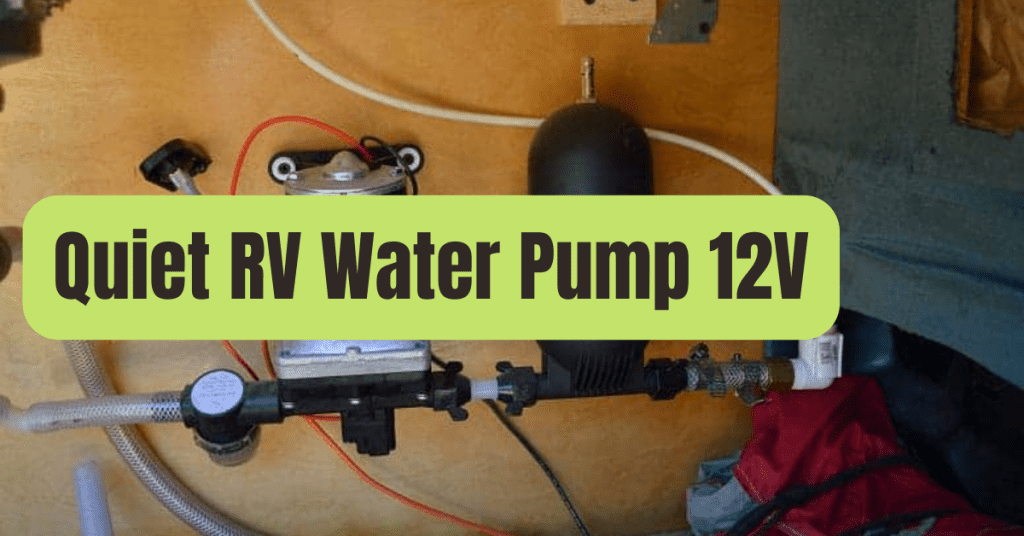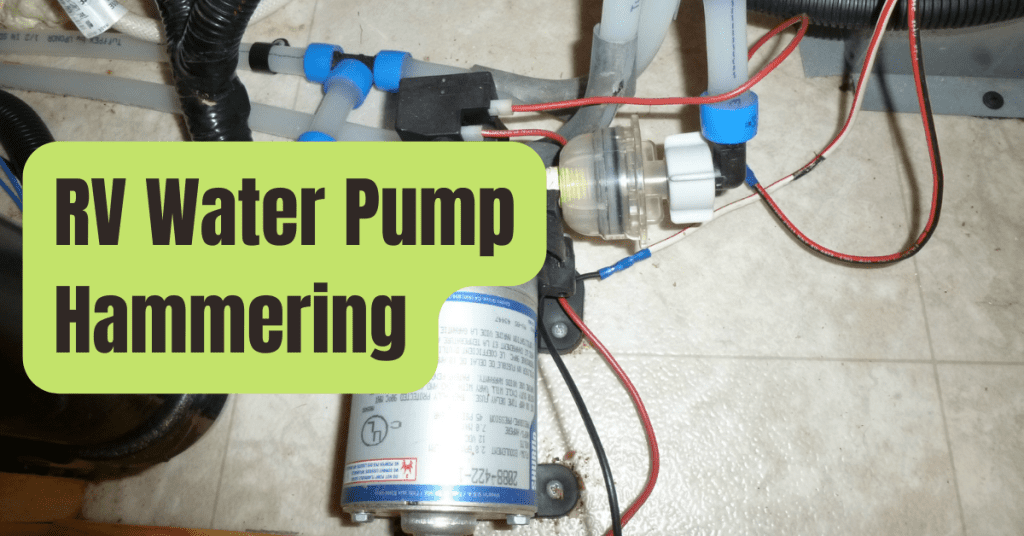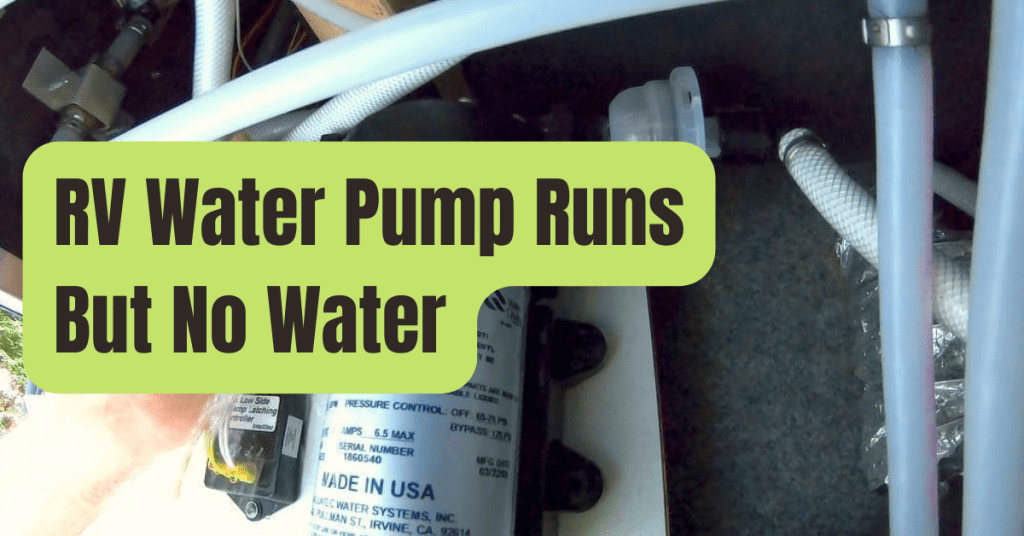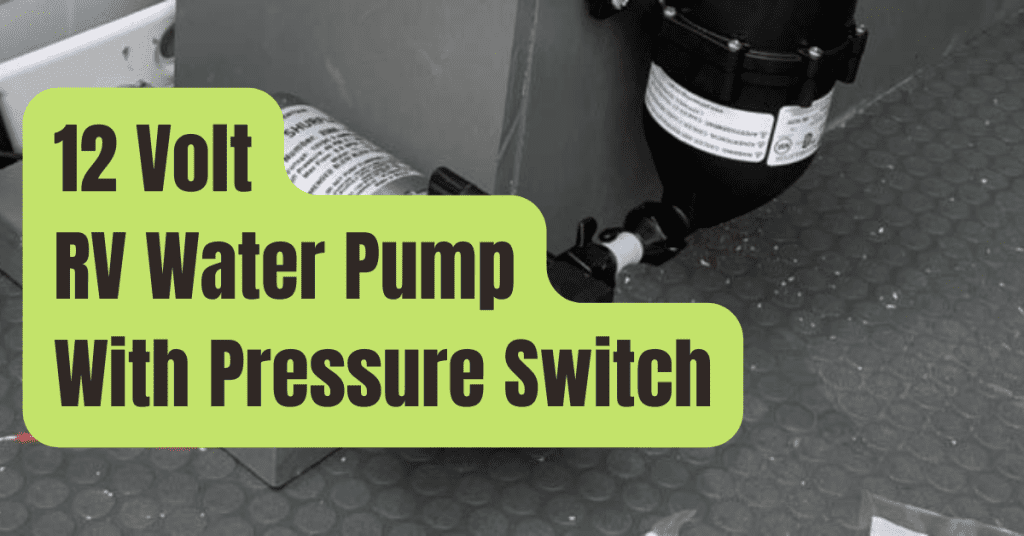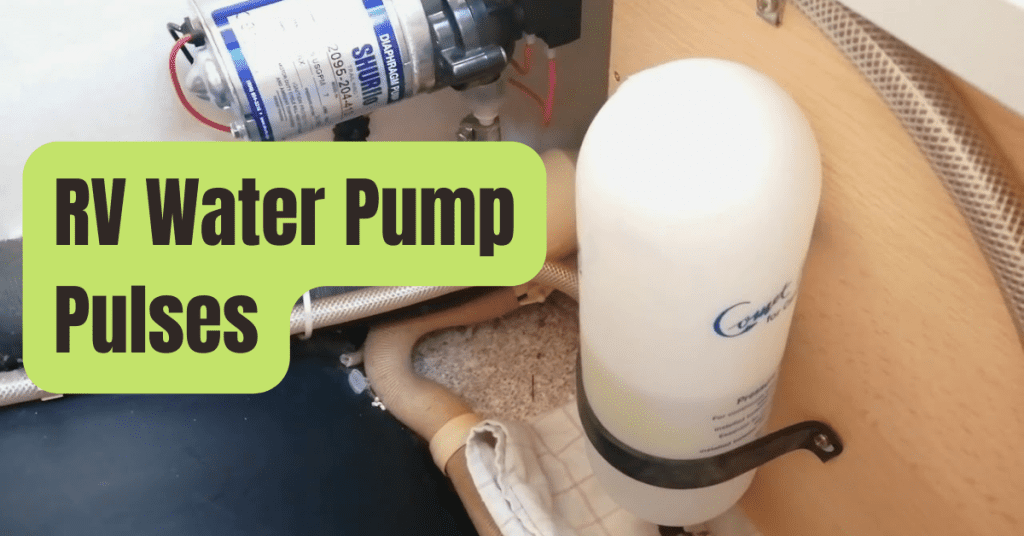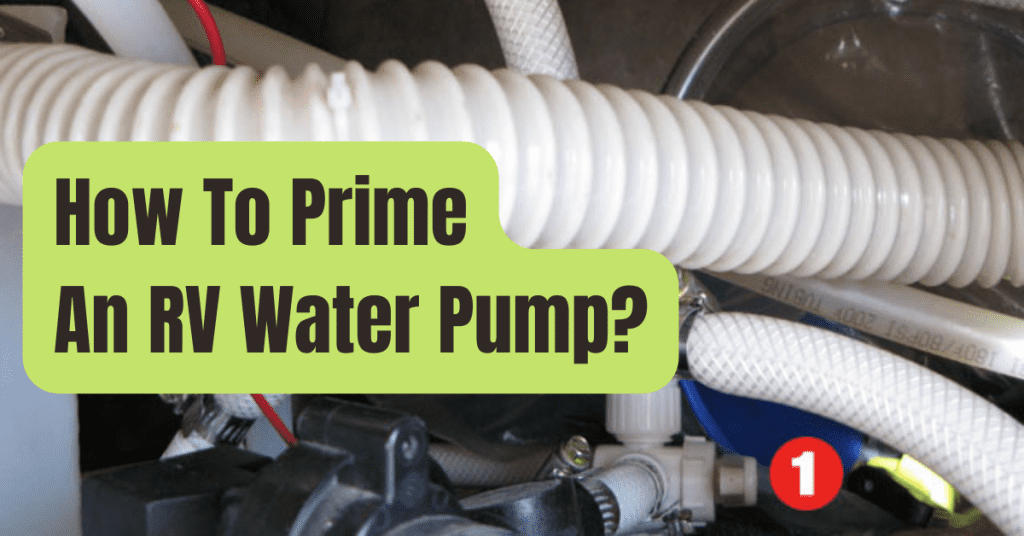Every time we open the faucet and fill a glass, many of us take for granted the availability of safe drinking water.
However, if your lifestyle entails frequent stops in an RV where the quality and safety of the water are uncertain, you should give it some serious thought before raising the glass to your lips.
After all, the safety of the water entering your RV and remaining in your fresh water tank determines how safe it is to drink.
Water quality and RVing are two of the key challenges.
The first is the water source, which is where you get the water for your fresh water tank.
This might be a campsite, municipal park, gas station, your house, or one of the many different places that provide water.
Most RVers (particularly us boondockers) follow the same routine to ensure that we never run out of water: when our fresh water tank is almost empty, we fill it at the next chance.
But what kind of water are we putting into our tanks? We often are unable to provide a response.

Water supplies along the road and at campsites are often unreliable in terms of quality.
Of course, the quality of the water in our fresh water tank is the second problem.
In a confined tank, germs and other unwanted materials may quickly proliferate.
The quality of the water entering the tank at each fill-up was the big unknown, so even though we typically sterilized our fresh water tank with bleach twice a year, we never really knew the condition of what came out of that tank and into our drinking glass a few weeks after cleaning the tank.
If you’re thinking that “water filters” are the solution, you should know that more modern technology is more efficient and can do more tasks than conventional filters.
Our investigation on more suitable solutions for drinking water in our RV continued once we discovered that filters may be the source of contamination (they can trap bacteria, viruses, and cysts and enable them to thrive in the filter material).
How to Get Safe Drinking Water in an RV the Old-Fashioned Ways
There are a few conventional methods for handling the problem of safe drinking water in an RV.
Since the majority of our readers could be employing one or more of these techniques—and since we’ve all used them at some point—quickly let’s go through them.
#1. Water in Bottles
For many travelers, the best option for drinking water in an RV is bottled water.
When they travel, some of our friends choose to drink bottled water because they believe the benefits outweigh the drawbacks.
Let’s look at it.
Pros
The flavor of bottled water is one benefit.
Bottled water is commonplace.
It tastes just like we anticipate it to.
Many individuals even have a preferred brand of bottled water, and they value the flavor constancy and consider it to be priceless.
The fact that bottled water is so readily accessible is another benefit.
Nearly every corner has a bottle of water (or a whole case).
There is no shortage of bottled water available for purchase at gas stations, Walmart, Sam’s Club, Costco, and other grocery stores.
Additionally, you may get bottled water in a variety of quantities, ranging from single-use bottles to multi-gallon containers.
Cons
Bottled water takes up room and adds weight to your load, which is one of the drawbacks of using it as drinking water in an RV.
Anyone who has ever taken a trip in an RV is aware of how important it is to carry as little as possible.
Water weighs 8.34 pounds per gallon, which may be a serious problem for RVers who are close to or over their weight restriction.
The conveniences mentioned above are less appealing when you have to carry water inside the RV, find a place to store it, and figure out how to prevent it from turning into hot water in plastic bottles when the interior of the RV becomes heated.
Another significant disadvantage of bottled water is its price.
Water is still one of the few things remaining in life that is often available for FREE, so paying the high price for bottled water seems plain stupid.
Speaking of wasteful, single-use plastics may be the worst disadvantage of all when it comes to bottled water.
What in the world do we believe would happen if we use hundreds and thousands of bottles each year, after bottle after bottle? We have a significant plastic trash problem on our hands when you multiply the number of bottles one family purchases in a year by the millions of individuals who purchase bottled water.
Yes, we can (and should) recycle plastics, but it’s far better for the environment if we avoid using them in the first place.
Additionally, as RVers, using throwaway plastic containers whenever we feel a little thirsty seems entirely at odds with appreciating the natural beauty of planet Earth.

Consumers like bottled water a lot, but at what cost?
Now that we’ve gotten off our soapbox about bottled water, all we’re actually saying is that there are better methods, and better is, well, better.
#2. Cleaning the Fresh Water Tank in Your RV
For many years, we used bleach to disinfect our fresh water tank twice a year.
I thought this was the way to go.
Water for drinking, washing dishes, cooking, and taking showers could be obtained in this fashion.
We even shared a blog article and a video showing how we clean our fresh water tank.
At the time, we believed that this strategy was the most effective for dealing with the issue of drinking water in an RV.
And many RVers still utilize it as a realistic choice.
Pros
You may prevent any growth in the fresh water tank of your RV by routinely cleaning it.
As a result, you may feel secure drinking the water that is stored on board, and the whole fresh water system, including the water that comes from the bathroom faucet and shower, is safeguarded.
But is using bleach to sanitize water the best approach to guarantee it is safe to drink in an RV?
Cons
Here is the issue.
While your tank may be practically clean for a while after bleach sanitization, this offers no protection against potentially dangerous water sources, such as when you’re running off at campsites and filling your tank instead of utilizing the sanitized water in your tank.
It goes without saying that you must replenish your fresh tank, thus there is no way to stop adding water from unidentified sources.
We also know that some individuals are unable to clean their tanks because of allergies to bleach or because they just choose not to use bleach for a number of reasons.

While bleach may be used to sterilize the water in your RV tank, this method is ineffective for water entering your RV via campsite water hookups.
The need to do tank sanitization on a regular basis necessitates time, access to a sizable volume of water, a location to empty the tank holding the bleach/water combination, and keeping bleach on hand.
If you’re doing this procedure at your house, it won’t be as much of a problem, but for those of us who live on the road, it may be less than handy.
#3. Reverse Osmosis
A high-pressure pump is used to propel water through a semipermeable membrane during reverse osmosis, which removes dissolved particles such minerals, salts, certain metals, and other contaminants.
A sediment filter, a pre-carbon block, and a post-carbon filter are employed in the procedure in addition to the reverse osmosis membrane.
Different sized particles are removed by each filter.
In the end, 95-99% of the dissolved salts are retained, and pollutants and other impurities are eliminated, leaving only highly clean water.
This method, which was formerly regarded as the greatest water filtration technology known until new information surfaced casting some of its advantages into doubt, has both advantages and disadvantages.
Pros
Reverse osmosis has the benefit of actually purifying drinking water.
Heavy metals are eliminated, especially from non-potable water sources, and safety and taste are much enhanced.
With a proper reverse osmosis system, even water with a high mineral concentration may be drank after being purified.
Cons
Unfortunately, reverse osmosis loses a tremendous amount of water — up to six times as much as it generates in clean water — and is a very sluggish process (so you can’t just connect up and instantly fill your fresh water tank).
Systems for reverse osmosis may be pricey, particularly when you factor in the cost of new filters over time.
Depending on the system bought, the systems may also need a good deal of room.
It’s also crucial to be aware that drinking water cleaned using reverse osmosis has to be stored in a tank in order to be used in an RV or anyplace else.
Additionally, germs might grow after the water is inside the tank.
But the major drawback is as follows:
In order to make saltwater drinkable, reverse osmosis was first invented.
In essence, however, it does its function too well by eliminating beneficial minerals including calcium, potassium, magnesium, and bicarbonates.
Demineralized water has been proven to be inappropriate for long-term ingestion and is really not healthful.
The World Health Organization has drawn attention to the detrimental impacts of demineralized or low-mineral water on health as well as the challenge of replacing those minerals in diets without compromising the wellbeing of humans and animals.
Long-term intake of water that has undergone reverse osmosis purification is a risk (as well as distilled water).
The issue is that the essential minerals and electrolytes—which are taken out during the purification process—are leached from the body when low-mineral or demineralized water is drank.
Numerous health problems may develop as a result over time.
Although occasional RVers may not be concerned about this, because we live in an RV full-time, it would not be a wise decision for us.
We’ve discovered that using newer, more advanced technologies is the best course of action for us.
The New Approach to Safe Drinking Water in an RV: UV-LED Cleansing
The best available technology for cleaning water while retaining essential minerals is ultraviolet LED water purification.
UV-LED purification systems destroy 99.999% of dangerous bacteria, viruses, particulates, and germs without the need of any additional chemicals.
Large municipal systems utilize the technology because it is so successful in ensuring that the water is safe to drink.
Chlorine is added to the water after UV sanitization in order to maintain purity while it passes through the distribution system and arrives at your home’s water taps.
The technology has been out of reach and impracticable for individual house or portable usage… until now.
Large, costly, power-hungry LED lights are employed to cleanse municipal systems.

Installed and operational, our Acuva ArrowMAX 2.0 UV-LED Water Purification System!
Let’s examine the operation of mobile UV-LED water purifying devices.
We’ll focus on the Acuva UV-LED system in particular since we’ve used one for years.
We are confident in the security of our Acuva system and suggest it as the most effective means of obtaining safe RV drinking water.
The Acuva UV-LED Water Purification System: How Does It Operate?
The Acuva UV-LED water filtration system employs tiny LED lamps that produce light at the UV-C wavelength, resulting in much lower power consumption and size—ideal for RVs!
Water is exposed to UV-C radiation as it moves through the system thanks to a proprietary design created by Acuva, which ensures that bacteria, viruses, cysts, and 99.999% of other impurities are eliminated (while leaving minerals that are important to the maintenance of good health).

SAVE 10%
10% off Acuva with coupon code RVGEEKS
Give up on bottled water! You may now clean your drinking water as major cities do by utilizing UV light.
Water is made safe to drink using a fraction of the area with Acuva’s UV-LED system…
Give up on bottled water! You may now clean your drinking water as major cities do by utilizing UV light.
Water is made safe to drink using a fraction of the area and electricity with Acuva’s UV-LED technology… ideal for RVs.
Use the coupon code mentioned below to get 10% off any Acuva system when making an online purchase from the Acuva website.
Any bacteria in the source water are rendered inactive by UV radiation, which prevents them from reproducing.
If someone drinks the water, they won’t be able to do that inside of them, which might cause an illness or sickness.
However, water hardness, lead, iron, silt, or chlorine cannot be removed by UV-LED light, despite the fact that it is quite successful in killing bacteria, viruses, cysts, and other similar organisms.
Because of this, every Acuva system has a pre-filter to filter out certain substances before the UV-LED process.
Acuva UV-LED Water Purification Benefits
Both the elegant, compact form and the technologies that power the Acuva UV-LED water purifying system have several advantages.
The system’s ability to guarantee clean drinking water at the moment of use is, of course, the first benefit.
There’s no need to spend money on a countertop system that takes up a lot of space or even a whole-house system, though you may.
Acuva has taken some really important purification technology that was first developed for the sanitization of enormous supplies of water and reduced it to an extremely small size, by contrast, without surrendering any of the technology.
As a result, the Acuva water filtration system guarantees clean drinking water at the source.
The fact that this system sanitizes and cleanses all water sources before they reach the water dispenser is very helpful for RVers.
Water from the fresh water tank in your RV as well as water from public water sources at campsites, your house, or any other water source that you regularly connect your RV to are all included in this.
The fact that the Acuva UV-LED system consumes extremely little electricity, which is great for boondocking (off the grid camping), which is our preferred kind of camping, is another huge advantage for RVers.
The Acuva system’s ability to be used in conjunction with additional filters, such as a pre-filter, is another benefit of its design.
According to the CDC, pre-filtered UV purification systems are very successful in getting rid of viruses like rotavirus, norovirus, and hepatitis A as well as bacteria like salmonella and E. coli and protozoa like cryptosporidium and giardia.
But as was already said, the UV-C purification procedure itself doesn’t deal with contaminants like lead, sedimentation, chlorine, and other possible compounds in your drinking water.
Instead of waiting for the thorough UV-LED destruction of germs and viruses, a pre-filter can handle all of that and more.
The flavor of the drinking water in an RV may be further enhanced by combining this with further filtration.

Pre-filters are included with every Acuva system to deal with impurities like lead, chlorine, sedimentation, and more before the UV-LEDs cure bacteria and viruses.
Although you’d assume the extra pre-filtration would be incredibly expensive, Acuva actually offers one with every system.
Additionally, replacements are inexpensive.
Our ArrowMAX 2.0 device is flow-triggered and small and space-saving (the main unit goes under the counter), enabling it to operate with an existing countertop filtered water dispenser if needed.
(Larger versions may deliver safe water at the main faucet and/or several outputs and are also flow-triggered.)
The Acuva system is the way to go for us, and we’ve been happy (and healthy!) using it for a while now.
We just updated to the ArrowMAX 2.0, as you may have seen in the video at the top of this piece, and gave away our long-time Acuva ECO NX to friends.
How Is an Acuva UV-LED Water Purifier Installed?
We have information on how tough the installation is if you’re thinking about installing an Acuva UV-LED water filtration system in your RV.
Check out our DIY video instruction and follow along as we install our first Acuva device by watching it step-by-step.
We have a fantastic offer from Acuva for RVgeeks members should you be interested in purchasing an Acuva UV-LED water filtration system for your own RV (or boat, or sticks & bricks home!).

SAVE 10%
10% off Acuva with coupon code RVGEEKS
Give up on bottled water! You may now clean your drinking water as major cities do by utilizing UV light.
Water is made safe to drink using a fraction of the area with Acuva’s UV-LED system…
Give up on bottled water! You may now clean your drinking water as major cities do by utilizing UV light.
Water is made safe to drink using a fraction of the area and electricity with Acuva’s UV-LED technology… ideal for RVs.
Use the coupon code mentioned below to get 10% off any Acuva system when making an online purchase from the Acuva website.
Does UV Light Kill E. Coli Viruses and Bacteria?
Yes! Although we read the facts as mentioned above, we still wanted to test for ourselves if UV radiation really did destroy E.
coli and other germs and viruses.
So, we took several samples—including one with an absurdly high E.
coli level—and ran them through an Acuva UV-LED water filtration system to see how well the Acuva system performed.
After that, we submitted them to a separate facility for analysis, and EVERYONE was cleared for consumption!
The video of this experiment in progress is available here:
When Was The Last Time You Sanitized The Water Tank In Your RV?
It’s very tempting to cease cleaning our fresh water tank altogether in light of the testing findings shown in the video above, as well as many years of actual usage in our own RV.
Our drinking water is solely sanitized by the point-of-use Acuva UV-LED water purification system at the kitchen water dispenser.
It’s still a good idea to sometimes sanitize an RV fresh water tank since other water applications, including bathing, might expose skin to germs and viruses.
We no longer clean our fresh water tank as often, typically once every two years, although we do it much less frequently.
Only one-fourth as much as we used to!
We also feel at ease knowing that any water we consume thanks to the Acuva UV-LED water purification system is hygienic and secure.
Conclusion
There are various methods to guarantee that the water you drink in an RV is safe.
Our Acuva device is the piece of technology that we trust most.
In over 20 years of living on the road full-time, we have never been more happy or confident in a water filtration product.

